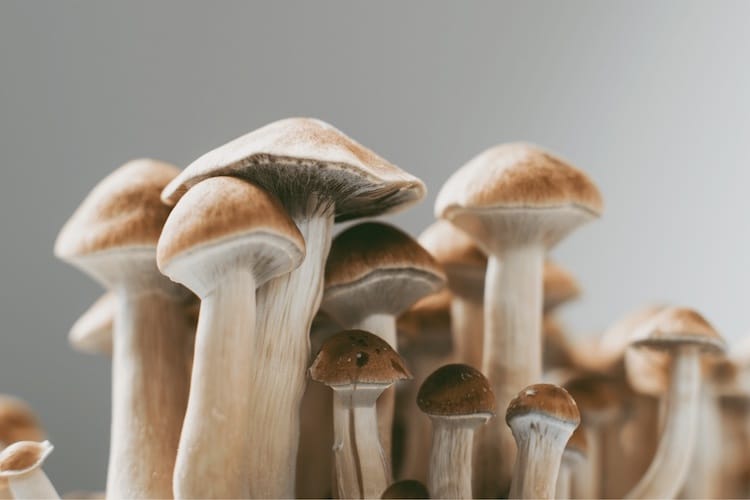
Magic Mushroom Species List
As you are probably aware, magic mushrooms are fungi that contain the psychedelic compound psilocybin. But within this broad definition, there is an incredible amount of diversity. Our magic mushroom species list contains almost 200 “strains” and “species” of the ‘shroom.
The most commonly cultivated and consumed genus of psilocybin mushrooms is the Psilocybe – so, yes, most of these strains and subspecies are genetic relatives to one another. However, every psilocybin mushroom contains a unique amount of psychoactive chemical compounds, and as a result, will have different effects for different people. How long a trip lasts and how strong it will be can vary greatly between strains, species, individual mushrooms within the same species, and amongst the people consuming them. Some psychonauts report that certain species create “mystical” or “body high” experiences, but this has proven difficult to measure.
Magic Mushroom Strains vs. Species: What Does the Science Say?
Different types of magic mushrooms are commonly referred to as “strains.” This concept of a ‘strain’ comes from the world of cannabis, wherein different types of cannabis leaves from different types of plants are referred to as strains. In reality, from the mycologist’s perspective, magic mushroom strains don’t exist.
Psilocybin mushroom strains are actually “subspecies.” For example, Penis Envy is a subspecies of psilocybe cubensis. This means Penis Envy is a cubensis, but its unique strength and appearance are from genetic variations within a certain group of psilocybe mushrooms.
With our mycology flex out of the way, let’s explore the different species of psilocybin-containing mushrooms.
Table of Contents
Species of Psilocybin Mushrooms
Psilocybin mushrooms are divided into different “genera.” A genera or genus is a group of species with similar characteristics. The most commonly cultivated and consumed genus of psilocybin mushrooms is the psilocybe. However, psilocybin and other active compounds have been found in many other ‘genera’ of mushroom, including:
Related Articles
Learn more about Psilocybin on Frshminds:
- Considering a retreat? Check out Frshminds’ Ultimate Psilocybin Retreat Center Guide.
- What Kind of a Drug is Psilocybin? What Will It Do To Me?
- How Long Does Psilocybin Stay in Your System?
- Don’t Miss the Best Psilocybin Retreats in Amsterdam
- How To Properly Store Magic Mushrooms
- Why Are There Psilocybin Retreats In Mexico?
- Want To Go To A Magic Mushroom Retreat in Jamaica?
- 3 Top-Rated Psilocybin Retreats in Costa Rica
- The Best Psilocybin Retreats: What To Look For
- Psilocybin Retreats in the Netherlands
How To Identify Psychedelic Mushrooms
Learning how to identify psychedelic mushrooms and distinguish them from the hundreds of other species found in the wild is a process – remember, this is an academic field that you can earn a degree in! So, standard disclaimer: this article is not a field guide and cannot replace expert knowledge. Many mushrooms are poisonous, and misidentified mushrooms can make you sick or even kill you. Do not eat mushrooms if you are not 100% certain what they are!
If you decide to take the plunge and forage for psilocybin mushrooms yourself, we recommend investing in a good mushroom field guide with plenty of pictures and descriptions you can decipher (not overly academic). To read more about identifying mushrooms, check out these articles:
- Psilocybin Mushroom Anatomy 101
- The Taxonomy of Magic Mushrooms
- Magic Mushroom Species vs. Strain
- Where do Liberty Caps Grow?
Related Infographic: 7 Facts about Magic Mushrooms
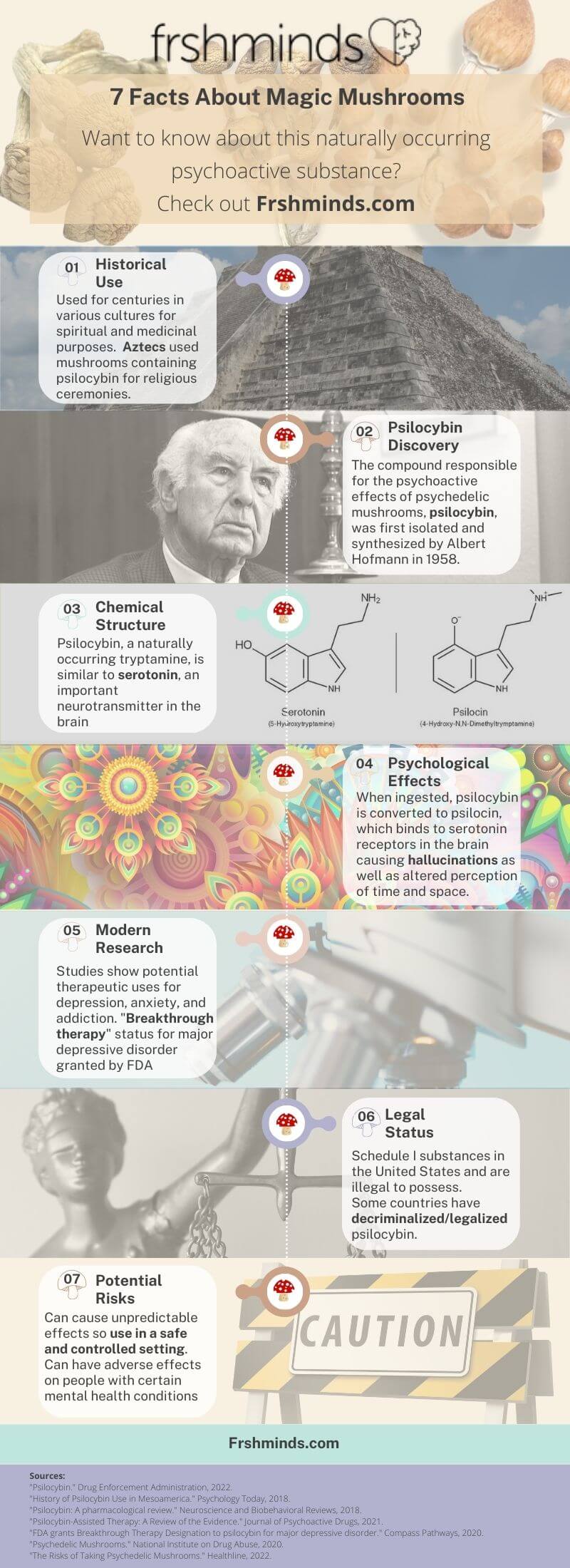
How to Identify Psilocybe Mushrooms
While there are thousands of mushroom species, psilocybe mushrooms share some key similarities:
- Psilocybe mushrooms can easily be confused for Smurfs in the wild – they become somewhat blue when you touch or damage them
- A thin, gooey layer of material separates the mushroom cap from its stem
- The mushroom will have very thick ‘gills’ on the belly of its cap
- The amount of water in a particular mushroom will define its colour
These features alone will not allow the novice mycologist to confidently identify wild mushrooms, but with practice and by studying Psilocybin Mushroom Anatomy, you will get there!
Famous Magic Mushroom Species List
Within the psilocybe genus there are a few ‘all-stars’ that most frequently get consumed. These include:
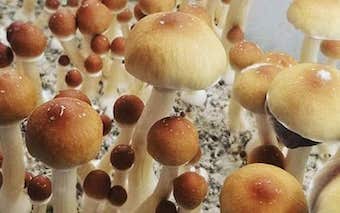
Psilocybe Cubensis; the “Cube”
If you’ve taken ‘shrooms, it was likely P. cubensis. As one of the easiest species to cultivate indoors, “cubes” were popularized in Dennis and Terence McKenna’s Psilocybin: The Magic Mushroom Grower’s Guide. The word Cubensis translates to “coming from Cuba”, where Franklin Earle first collected them.
Appearance: Cubes are generally larger than other Psilocybes, likely due to generations of genetic isolation. They have thick stems and large, broad caps that are brown but increasingly pale as you trace them out to the margin of the cap where they are almost white, and fading to more golden-brown or yellowish with maturity.
Habitat: The cube likes the heat. Its natural environment is throughout the Southern Hemisphere, and in tropical climates in the Northern Hemisphere (there’s your Cuba reference). While this may not be their most appealing feature, these mushrooms typically grow on poop in farmer’s field.
Effects: A cube’s effects depend on whether they are collected in the wild or cultivated. The naturally-occurring cube is relatively mild as a psychoactive. Cultivated sub-species like ‘Penis Envy‘, however, have shown much higher amounts of active compounds. In either case, expect to experience classic psychedelic effects like euphoria, love and unity; introspection and finding a ‘deeper meaning’, and visual effects.
Strains: Because cubes can be cultivated so widely and easily, most of the mushroom ‘strains’ you’re likely to encounter come from this species. For more information on these individual ‘strains’ or subspecies, check out our Psilocybe Cubensis Magic Mushroom Subspecies guide.
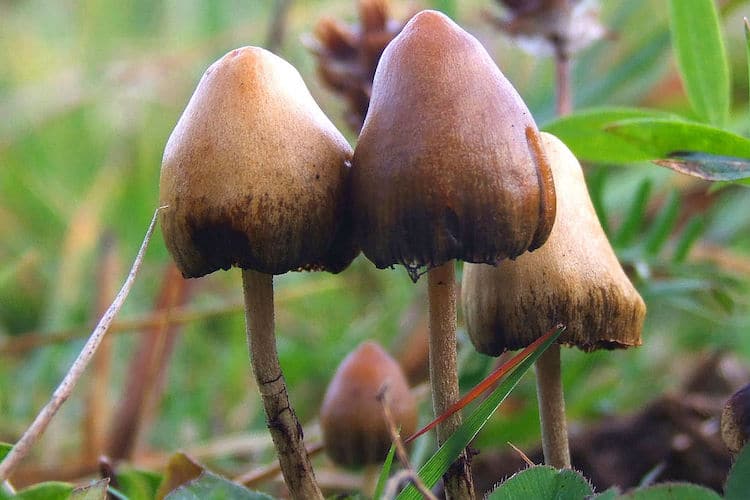
Psilocybe Semilanceata; the “Liberty Caps”
History: This mushroom probably started the modern magic mushroom movement. Famously, the first well-documented case of psilocybe intoxication occurred when a dad and his 4 children were foraging for mushrooms in London’s Green Park at the close of the 18th century, and were pleased to find plentiful Psilocybe semilanceata, and brought them home for dinner. We can assume that mom was NOT impressed.
Appearance: Liberty Caps get their name from the very pronounced bell-shaped cap. While most psilocybe mushroom caps flatten as they mature, the Liberty Cap sees its nipple-shaped cap roll down as it matures. Liberty caps are smaller than most of their Psilocybe cousins, with a thin, yellow-brown stem – when they get wet, their brown coloring deepens.
Habitat: Liberty Caps are very widespread, growing alone or in groups, typically in grassy areas. They seem to thrive when sheep or cow poop are present, but unlike their Cube cousins, they do not typically grow on the dung itself. Unlike Cubes, Liberty Caps are found across the Northern Hemisphere in cooler, wetter climates (and appear in the Southern Hemisphere only where there are similar climates, as in Chile or New Zealand.
Effects: Paul Stamets rates the Liberty Cap as the third most potent member of the Psilocybe species. The high concentration of psilocybin often results in a longer trip and a highly visual experience.
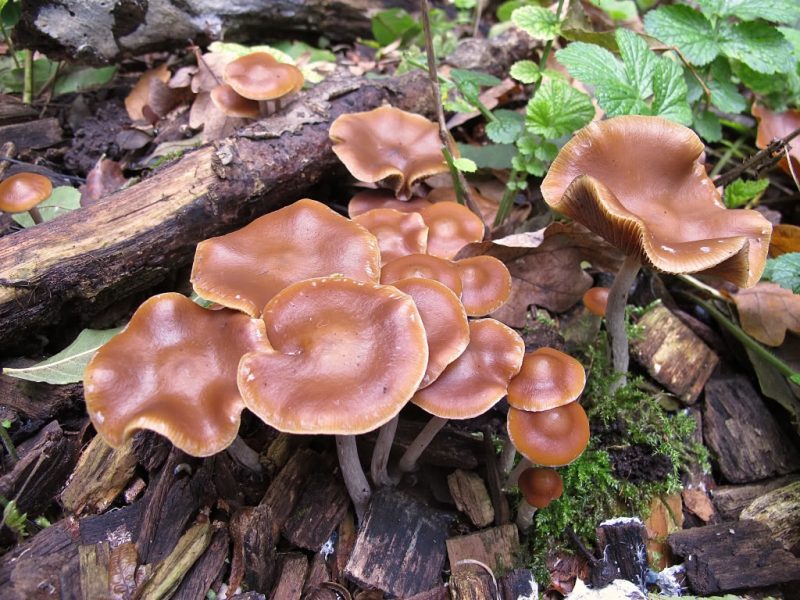
Psilocybe Cyanescens; the “Wavy Caps”
History: Back to London we go (perhaps you’re inclined to book a trip with all of these wild magic mushrooms lying about), where Elise Wakefield, an English mycologist, first collected the species in the early 20th century, describing them in 1946 in Transactions of the British Mycological Society.
Appearance: Wavy Caps have rich brown caps that become wavy upon maturity, and become somewhat yellow when dried, with pale, thick stems. While Wavy Caps can look similar to Cubes, you’re best to make sure you identify them accurately, as some subspecies are poisonous.
Habitat: Wavy Caps are famed for the fact that they might already be in your yard. These ‘shrooms thrive in mulch and wood chips, just as you would find in award-winning gardens across North America and Europe. Their native habitat is thought to be the forests of the north-western United States, but these mushrooms have now spread to almost every continent.
Effects: Wavy Caps are alot stronger than Cubes, typically containing 30 to 60 percent more psychoactive compounds. The experienced effects are classic and very similar to those with Cubes, but some psychonauts say the increased psilocybin content in Wavy Caps makes for a more intense, and visual, experience.
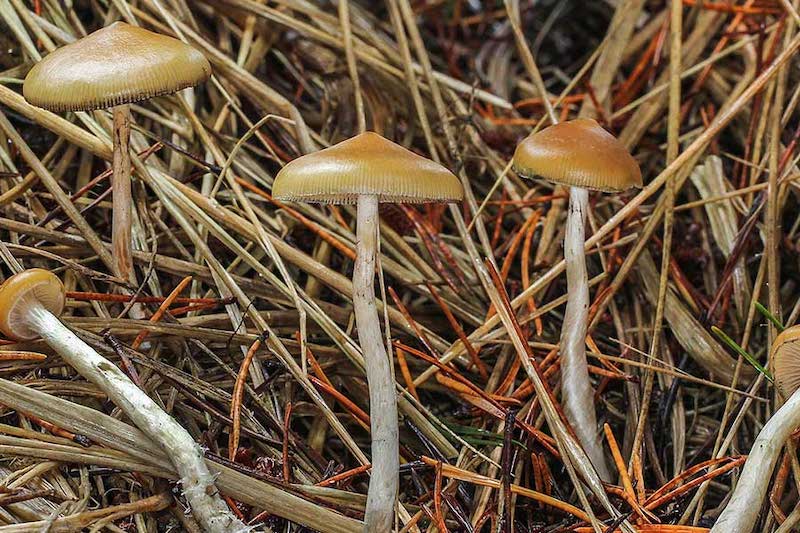
Psilocybe Azurescens; the “Flying Saucers”
History: Psilocybe Azurescens, or “Flying Saucers”, are a rare and potent species of the family, officially classified for the first time in 1996. First discovered by a group of Boy Scouts near the mouth of the Columbia river in the US Pacific Northwest (another great destination for those looking to hunt for magic mushrooms with Oregon legalizing personal use in early 2023, you won’t even need to hide your harvest).
Appearance: The caramel-coloured caps start out cone-shaped and slowly flatten as they mature, resembling flying saucers. The stem is thin, dark brown at the base and whitens closer to the cap. The name Azurescens is derived from the blue, or “azure”, bruising that occurs when you handle them.
Habitat: These mushrooms are not naturally found across the globe. Flying Saucers grow in sandy soil, like dunes and seagrasses, and on loose, rotting wood. Flying saucers are found on the West coast of the U.S., from California to Washington. They can withstand chilly temperatures compared to other psilocybin-containing mushrooms, making them easy to cultivate outdoors in the U.S. and Europe.
Effects: Flying Saucers, or “Azzies,” have been identified as perhaps the most potent Psilocybe species. Alongside intense visual hallucinations and profound alterations to consciousness, they can also induce temporary paralysis at high doses – not recommended for the newbie.
How do I Know How Strong My Psilocybin Mushrooms Are?
To measure magic mushroom strength, labs generally focus on four compounds. Inside most psychedelic mushroom species, you will find:
- Psilocybin: The main psychoactive compound of magic mushrooms, but it’s not what makes you trip! When you eat shrooms, your body changes psilocybin into psilocin, which then creates a psychedelic effect.
- Psilocin: Naturally occurs in mushrooms in tiny amounts and is why magic mushrooms turn blue when chopped up or bruised. When psilocin comes in contact with oxygen, it turns bluish or black.
- Two other compounds in magic mushrooms that might affect the strength of a trip are Baeocystin and Norbaeocystin, but how big of a role they play in how strong a mushrooms trip will be remains unknown. The average amounts of these compounds vary and can only be measured with special lab equipment.
What is The Best Magic Mushroom Species?
The best magic mushroom species is not about getting the strongest shrooms you can find; it’s about finding the level of intensity that suits your mood and level of experience.
Magic Mushroom Species List
With hundreds of psilocybin species known and many more likely to be discovered and created by breeders, you should check back regularly to see if we have updated this article! For now, we readily admit that this magic mushroom species list does NOT include all of the species known to science. But it’s comprehensive enough to cover even the most experienced psychonaut. Please share with our other readers in the comments which species you prefer and why!
Our comprehensive species list:
Conocybe
Copelandia
Galerina
Gymnopilus
Inocybe
Panaeolus
Pholiotina
Pluteus
Psilocybe
Psilocybe liniformans americana

Comments